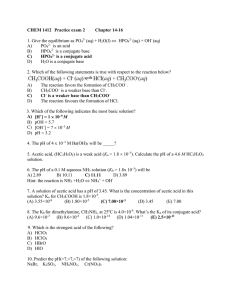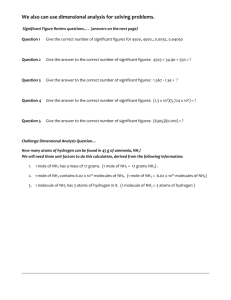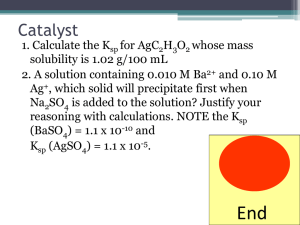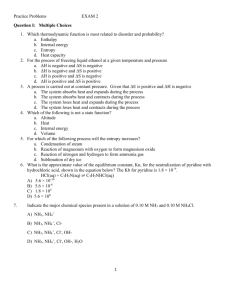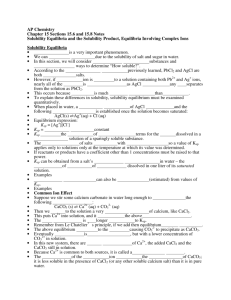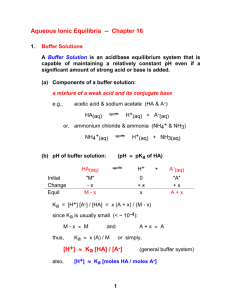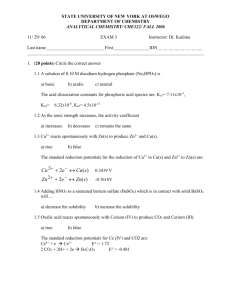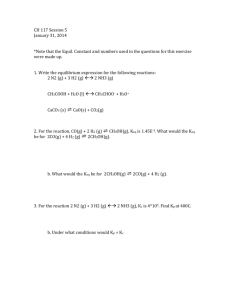solubility buffer
advertisement
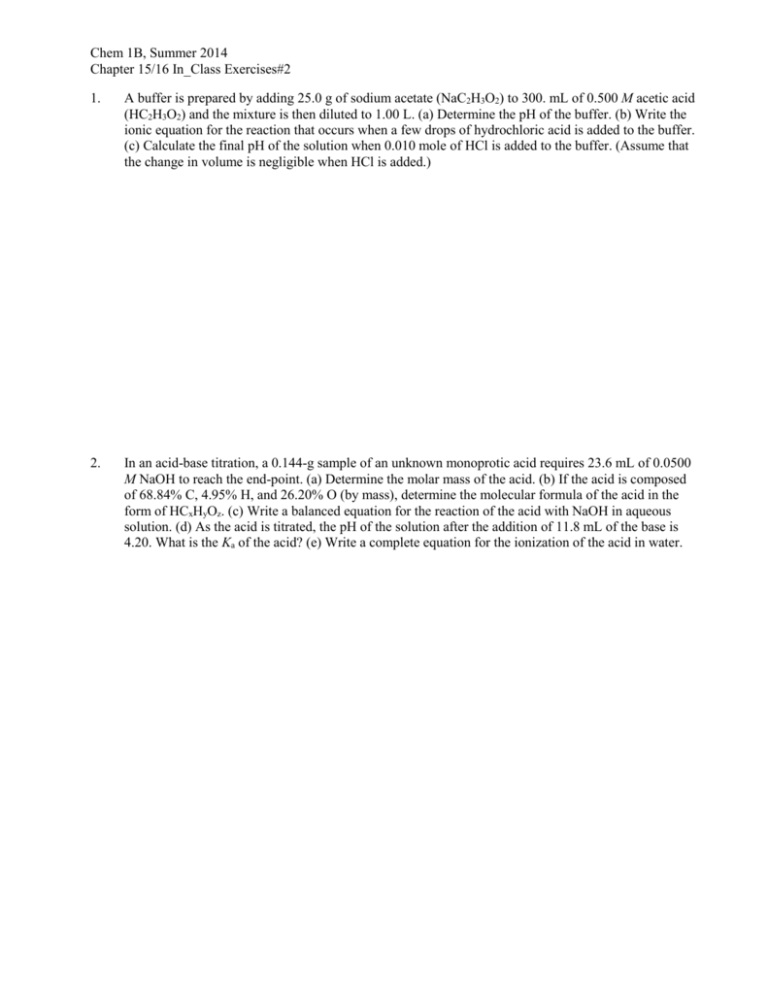
Chem 1B, Summer 2014 Chapter 15/16 In_Class Exercises#2 1. A buffer is prepared by adding 25.0 g of sodium acetate (NaC2H3O2) to 300. mL of 0.500 M acetic acid (HC2H3O2) and the mixture is then diluted to 1.00 L. (a) Determine the pH of the buffer. (b) Write the ionic equation for the reaction that occurs when a few drops of hydrochloric acid is added to the buffer. (c) Calculate the final pH of the solution when 0.010 mole of HCl is added to the buffer. (Assume that the change in volume is negligible when HCl is added.) 2. In an acid-base titration, a 0.144-g sample of an unknown monoprotic acid requires 23.6 mL of 0.0500 M NaOH to reach the end-point. (a) Determine the molar mass of the acid. (b) If the acid is composed of 68.84% C, 4.95% H, and 26.20% O (by mass), determine the molecular formula of the acid in the form of HCxHyOz. (c) Write a balanced equation for the reaction of the acid with NaOH in aqueous solution. (d) As the acid is titrated, the pH of the solution after the addition of 11.8 mL of the base is 4.20. What is the Ka of the acid? (e) Write a complete equation for the ionization of the acid in water. Chem 1B, Summer 2014 Chapter 15/16 In_Class Exercises#2 3. A saturated solution of Mg(OH)2 at 25oC has a pH of 10.41. (a) Calculate the solubility (in mole/L) in water and the Ksp of Mg(OH)2. (b) How many gram of Mg(OH)2 will dissolve in 1.00 L of water? (c) Using the calculated Ksp, determine the solubility (in mol/L) of Mg(OH)2 in a solution that is buffered at pH 9.50. 4. Given the following equilibria: AgCl(s) = Ag+(aq) + Cl–(aq); Ag+(aq) + NH3(aq) = Ag(NH3)+(aq); Ag(NH3)+(aq) + NH3(aq) = Ag(NH3)2+(aq); Ksp = 1.6 x 10–10 K1 = 2.1 x 103 K2 = 8.2 x 103 (a) Calculate the equilibrium constants for the following equilibria: (i) Ag+(aq) + 2NH3(aq) = Ag(NH3)2+(aq); Kf = ? (ii) AgCl(s) + 2NH3(aq) = Ag(NH3)2+(aq) + Cl–(aq); Kc = ? (b) What is the molar solubility of AgCl(s) in water? (c) Calculate the molar solubility of AgCl(s) in 1.0 M NH3(aq). (d) How many grams of AgCl will dissolve in 500. mL of 1.0 M NH3(aq)?



